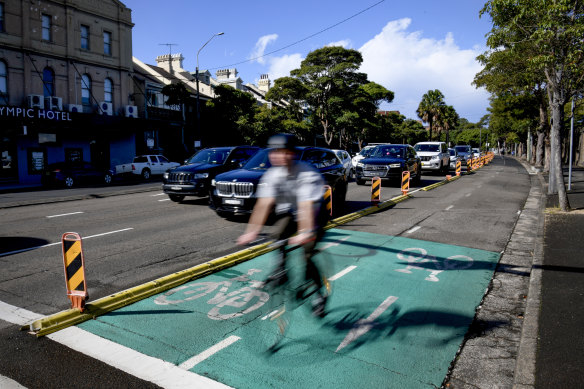It is often assumed that cars are the most efficient form of transport in cities due to their speed. While cars certainly boast higher speeds over bicycles, they often lack the ability to move smoothly with unbroken continuity also known as flow. This lends to question which form of transport provides more flow as opposed to speed?
Cars are designed for high-speed travel, which makes them ideal tools for travelling over long distances. However, their speed’s potential rarely translates into actual efficiency when using them for short distances in cities (i.e. under 5kms). Between red lights, traffic congestion, parking searches, and bottlenecks, the average car journey in cities is a constant cycle of stop, start. A car may be capable of travelling at 110 kph, but in a city environment, it often crawls at a maximum speed of 20kph, along with periods of sitting idle followed by short bursts of acceleration as a result of frequent traffic signals and stop signs.
In contrast, cycling operates with a more continuous rhythm. Bicycles are nimble, require less space, and can often avoid congestion and traffic signals altogether. When cycling in infrastructure that is dedicated and prioritised for cycling, people are generally able to set a cruising speed due to minimalised conflicts with other street users (i.e. people walking and driving). This reduces the number and need for traffic signals providing a more fluid experience allowing for less stationary time and more time for movement.
As such, this steady predictable flow gives cycling a major advantage in short trips (i.e. under 5kms) within urban environments. While a person driving might sit and crawl through multiple red lights, congestion and stop signs, a person cycling is able to weave, glide and take alternative routes. Over time, that consistent flow outperforms speed contributing to a more pleasant and continuous travel experience.
From a physics perspective, cars waste energy every time they stop be it braking, sitting idle, or re-accelerating. In contrast, bicycles, when riding at cruising speed, are naturally optimised to conserve energy. As an extension of our bodies, we as humans learn to time lights, coast when possible, and maintain momentum as necessary. This not only reduces energy and fatigue but also makes cycling surprisingly more adaptable, efficient and quicker for urban commuting.
When we think of traffic we often think about the urgency and the need for speed to arrive at a destination as quickly as possible. However, traffic isn’t just about speed — it’s about space. A single car can take up the room of six bicycles. When streets are dominated by cars, congestion is inevitable. But when more people cycle, the road “flows” better for everyone. This is why cities that heavily invest in cycling infrastructure often see improved traffic flow overall.
In summary, cars stop and go while bikes flow. While cars will win on open highways, in urban environments combined with proper infrastructure, bicycles often offer a smoother, faster, and more predictable ride. For short trips, choosing a bike isn’t just better for the environment, our health and our wallets — it might actually get us there faster.

